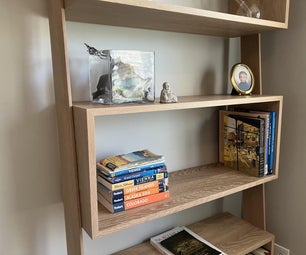Introduction: Fun With Bismuth
Bismuth is a lesser-known metal. It isn't seen in consumer products much (it has some applications in manufacturing) and isn't particularly rare or valuable. A good overview of bismuth is here.
It has several qualities that make it suitable for amateur experimenters: it's not poisonous, it has a fairly low melting point, it's cheap, and it has a really lovely crystalline structure. It's great fun to play with.
I got the health question a lot from people I mentioned this project to. Unlike lead, mercury, nickel, or other metals, there is no significant health risk from vapors or from touching bismuth or ingesting small amounts (it's actually the active ingredient in a popular brand of stomach medicine). There is of course a burn risk when you melt it, but adequate precautions and basic care reduce this to levels that are quite acceptable for me - it's really no riskier than boiling a large pot of water.
Step 1: Equipment and Safety
As with nearly anything these days, bismuth can be purchased on the Internet. I got a pound for about $15 US. This turned out to be a cube (more or less) of an inch and a half to two inches on each side.
Obtain the following additional items:
- goggles in case of splashing
- leather gloves
- crucible - stainless steel pot or bowl
- heat source - stovetop works fine, i used a camping stove
- big tweezers to pick out crystals
- pliers to handle crucible if it has no handle
I got my bismuth from Rotometals for $15 plus about $7.50 shipping, which was lowest for my location. Other online sources sell it as well.
Step 2: Melting
This is very straightforward. Turn on the heat and wait. Full melt took about 12 or 15 minutes at whatever temperature I was getting from the camp stove.
Step 3: Crystals
Once the bismuth is all melted, turn off the heat and let it cool down. As the metal cools, it will create crystals under the surface. Poke it gently with the tweezers and you'll see where solid pieces have started to form. Gently pick these up and turn them over to see the crystalline structure underneath. Not all pieces will form the beautiful step-wise cubic crystals, but you can remelt any that you don't want to keep.
The iridescent colors are caused by oxidation, which happens very quickly when the melted bismuth is exposed to air. It may be possible to reduce this by plunging the crystal immediately into water, but I did not think to try this - next time!
Step 4: Pouring Into Water
The picture shows the results. Notice there is no oxidation!
Step 5: Pouring Into Molds
We also poured some and attempted to insert pins to make pushpins. This did not work so well - the plastic one melted and the nail is loose. It was moved slightly before the bismuth was quite solidified -- and the bismuth doesn't stick to steel.
Step 6: What Else?
I remelted the pieces five or six times. After a while there was a crust on the top of the melted metal that didn't seem to want to flow back under. It's not crystalline and it wouldn't melt. I suspect this was just some that got particularly heavily oxidized after all the melting and solidifying.
I sanded the back of one of the crystals that was particularly beautiful. I will epoxy a loop onto it so it can be worn as a pendant. What with the non-stickiness of the bismuth I'm not sure epoxy will bond to it but I'll update this when I find out.
One thing I noticed was that the bismuth did not bond to things very strongly. It got all over the ends of the tweezers but I was able to crack most of it off once it had cooled down. It splattered a bit over our metal table but didn't stick to that either. It didn't stick to the silicone mold at all (of course this is also a property of silicone). It didn't stick to the nail. I was able to crack some of it out of the mixing bowl, although not all. The bismuth particles on the sandpaper fell right off too, unlike most things which tend to stick to the grit, and can only sometimes be brushed or tapped off.













